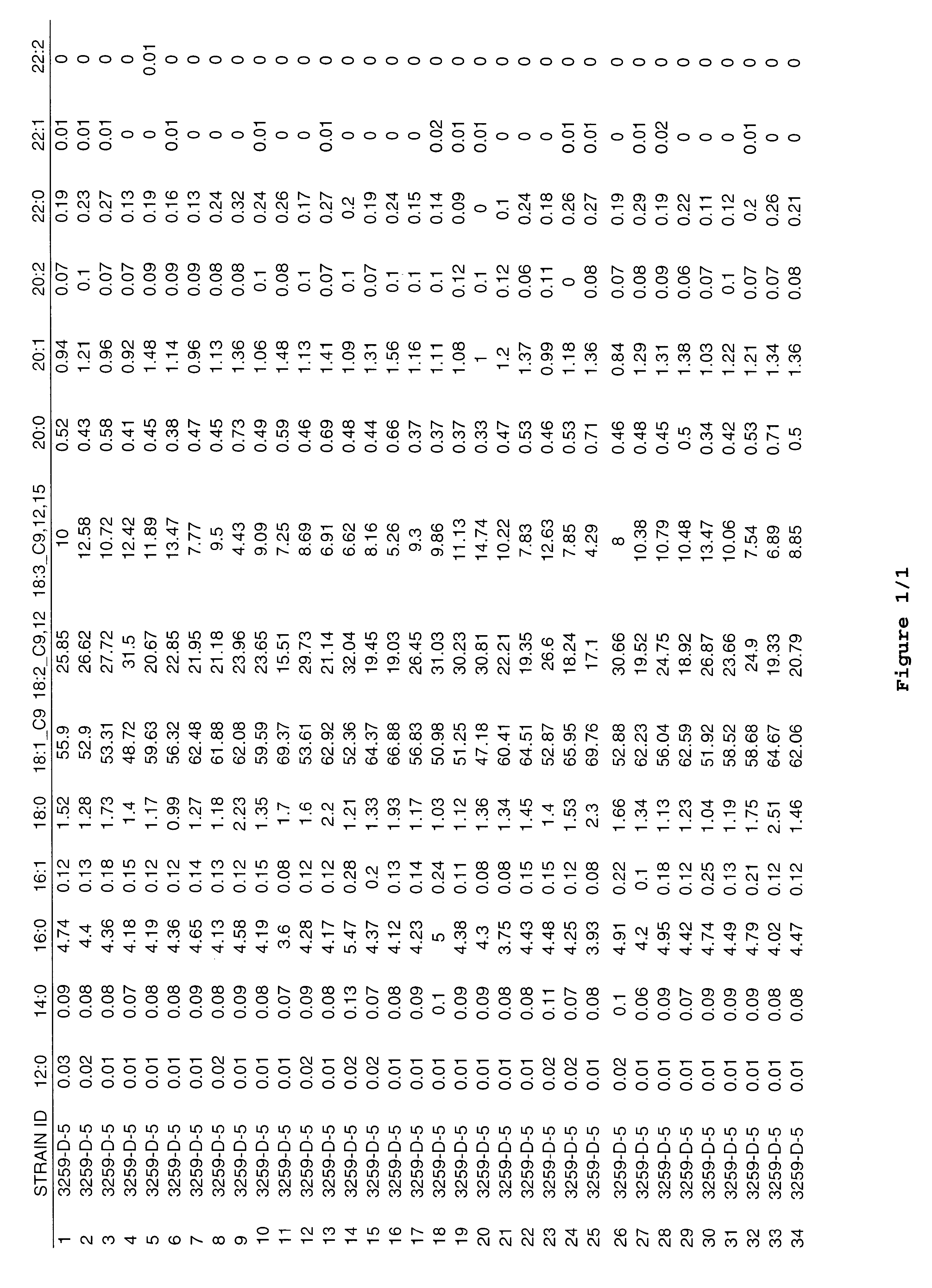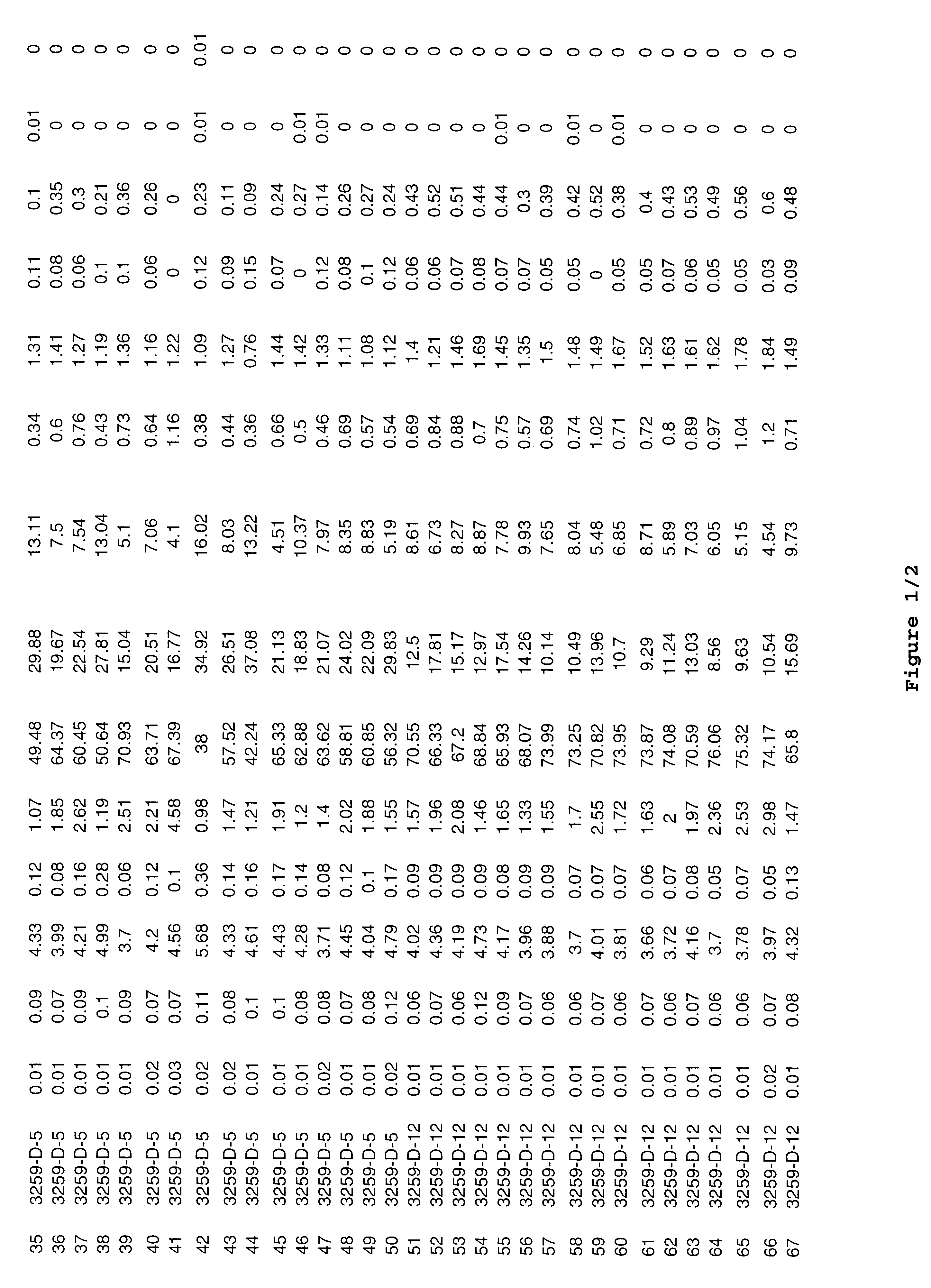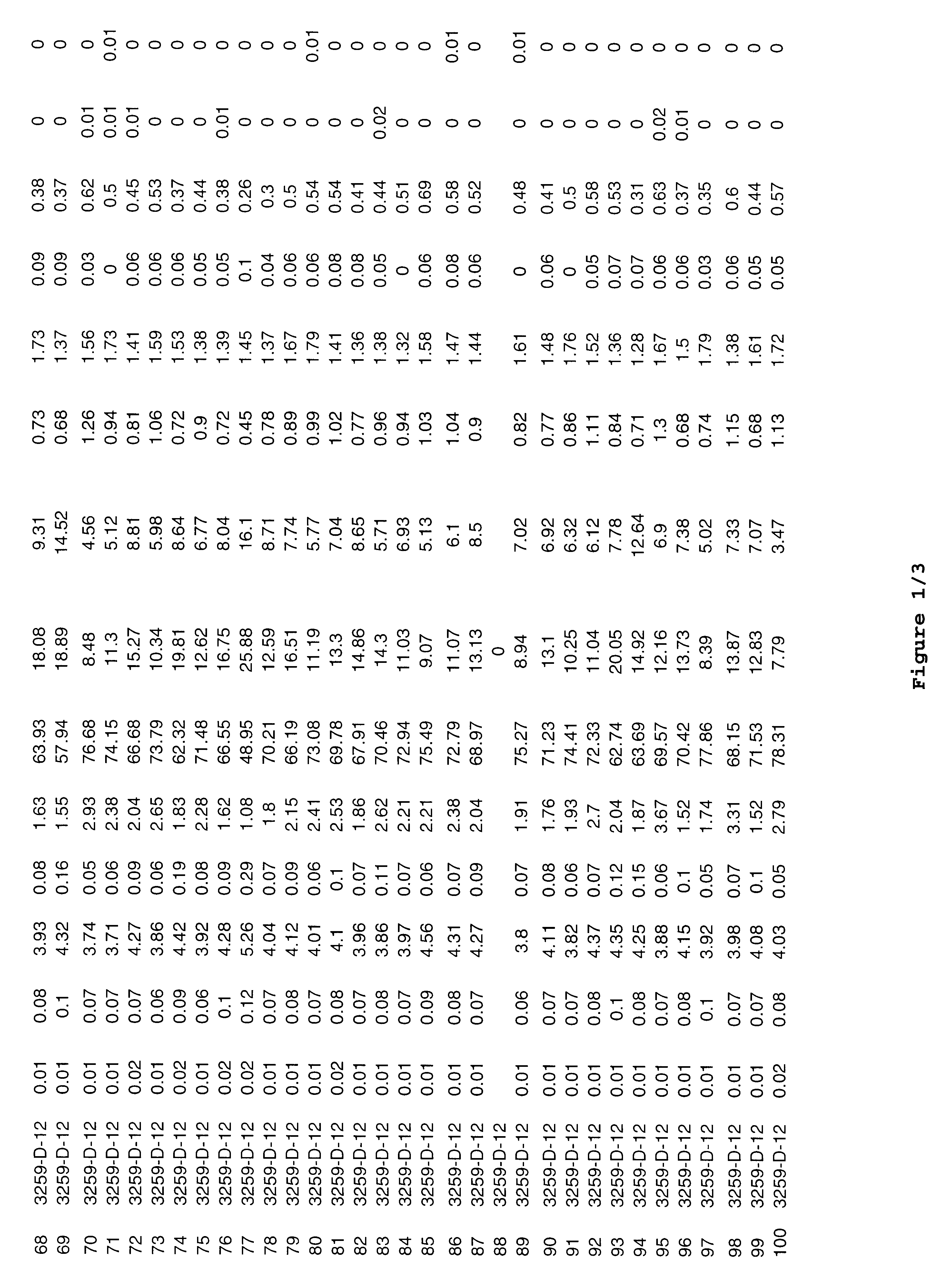Methods for producing plants with elevated oleic acid content
- Summary
- Abstract
- Description
- Claims
- Application Information
AI Technical Summary
Problems solved by technology
Method used
Image
Examples
example 1
Expression Constructs
A construct containing the Brassica campestris synthase factor B (also referred to as KAS I) cDNA sequence (SEQ ID NO:1), pCGN3248 (described in U.S. Pat. No. 5,475,099, the entirety of which is incorporated herein by reference), is mutagenized to insert SmaI, BglII and SalI restriction sites approximately 200 bases 3' of the translation stop signal, resulting in pCGN3255. pCGN3255 is digested at the factor B cDNA internal SalI site located approximately 140 bases in from the 5' end of the cDNA and at the 3' BglII site inserted by mutagenesis. The resulting synthase factor B cDNA fragment is ligated into BglII and SalI digested pCGN3223, the above described napin expression cassette, resulting in antisense construct pCGN3257. Thus, transcription of the Brassica synthase factor B sequence from the napin promoter will result in production of an mRNA strand that is complementary to that of the endogenous Brassica synthase factor B gene.
The fragment containing the s...
example 2
Fatty Acid Analysis
The fatty acid composition is analyzed from about 50 individual seeds from each of two lines. The fatty acid compositions are shown in FIG. 1.
The results of the fatty acid compositional analysis demonstrates that significant increases in oleic acid (18:1) are obtained in the oil of Brassica seed containing antisense KAS I expression constructs. Oleic acid levels of as high as at least 78 mol percent are obtained using such constructs, for example in lines 3259-D12 (#100). Smaller increases are also obtained, for example several lines are obtained which contain over 70 mol percent oleic acid. Furthermore, the majority of the lines obtained contain greater than about 65 mol percent oleic acid.
Furthermore, reductions in the amount of polyunsaturated fatty acids are obtained in the oil of seeds from Brassica plants containing antisense KASI expression constructs. Amounts of linoleic acid is decreased to below 15% of the total fatty acid species, and as low as about 7....
example 3
Identification of Soybean .beta.-ketoacyl-ACP Synthase I Sequences
In order to produce soybean lines with increased oleic acid content, additional KASI DNA sequences from soybean EST libraries are identified. Four EST sequences from soybean are identified which are related to the Brassica KASI sequence (U.S. Pat. No. 5,475,099) (SEQ ID NOs:2-5). Nine EST sequences are also identified in soybean EST libraries which are related to the Brassica KASII sequence (SEQ ID NO:6-14).
To obtain the entire coding region corresponding to the soybean KAS I EST sequences, synthetic oligo-nucleotide primers are designed to amplify the 5' and 3' ends partial cDNA clones containing acyltransferase related sequences. Primers are designed according to the respective soybean KAS I EST sequence and used in Rapid Amplification of cDNA Ends (RACE) reactions (Frohman et al. (1988) Proc. Natl. Acad. Sci. USA 85:8998-9002) using the Marathon cDNA amplification kit (Clontech Laboratories Inc, Palo Alto, Calif.)....
PUM
| Property | Measurement | Unit |
|---|---|---|
| Percent by mole | aaaaa | aaaaa |
| Content | aaaaa | aaaaa |
| Antisense | aaaaa | aaaaa |
Abstract
Description
Claims
Application Information
 Login to View More
Login to View More - R&D
- Intellectual Property
- Life Sciences
- Materials
- Tech Scout
- Unparalleled Data Quality
- Higher Quality Content
- 60% Fewer Hallucinations
Browse by: Latest US Patents, China's latest patents, Technical Efficacy Thesaurus, Application Domain, Technology Topic, Popular Technical Reports.
© 2025 PatSnap. All rights reserved.Legal|Privacy policy|Modern Slavery Act Transparency Statement|Sitemap|About US| Contact US: help@patsnap.com



